A little history
A nephew of the unfortunate Jo Schlesser, who was killed during his very first Formula One Grand Prix, Jean-Louis Schlesser made himself known first on racing tracks. As his uncle, he even appeared in Formula One at a rather ripe old age, making himself famous during the only race he actually started (the 1988 Italian Grand Prix) for a mishap with race leader Ayrton Senna. Schlesser was much more successful in endurance racing, where he clinched two world championships in 1989 end 1990.
Nonetheless Schlesser had already had an attempt in the Paris-Dakar race by then. From 1989 he became a regular competitor and, after giving up his race tracks activities, decided to compete with his very own machine starting in 1992.
Schlesser didn’t make things easy for himself, choosing to build a buggy. This type of cars had often been entered in the Dakar in the past, but all attempts had ended in complete failure. The pilot-constructor’s original approach was to design a vehicle which light weight would allow being competitive with no more than a two-wheel-drive transmission. Furthermore, Schlesser would be alone on board, assuming the functions of both the pilot and navigator (he would later revert to a more traditional division of tasks). Though he was able to record some early wins in a few rally-raids, his regular entries in the extremely difficult Paris-Dakar were, for several years, said to be courageous but doomed to failure.
His first major success came in 1998, when his regularity brought him a world title in rally-raid racing – he would retain the crown until 2002. A victory in the Dakar finally stopped eluding him in 1999. The bold approach of the stubborn Schlesser had finally paid off and, even better, the Frenchman would renew his victory in 2000.
Today, Jean-Louis Schlesser’s little team is still active in rally-raids, though its heydays seem over. Actually, after being powered by Porsche (1992-94) and Seat (1995-96), the buggy’s brighter days date back to the cooperation with Renault (1997-2002), which PRV V6 was both powerful and reliable. After a switch to Ford engines in 2003, results significantly dropped and, furthermore, an apparent partiality of the FIA towards large, money-laden factory teams at the expense of the smaller outfits played against Schlesser.
About the models
We could have so many more models if the little game between die-cast manufacturers wasn’t to copy each others!
Model: Schlesser Mégane Buggy
Year: 2000
Event: 2000 Paris-Dakar Rally, driven by Jean-Louis Schlesser, navigator Henri Magne (overall winners)
Maker: Ixo
Scale: 1/43
Distributed by: Altaya as no.31 of its 100 Ans de Sport Automobile press series
Acquired: second hand with stand but without box, in December 2008, in Brive, France
Altaya distributed this Ixo-made model a few years ago through one of its early series. Competition was scarce back then and standards of quality were therefore low, so this die-cast could seem a little crude by today’s standards. My rating is 11/20.

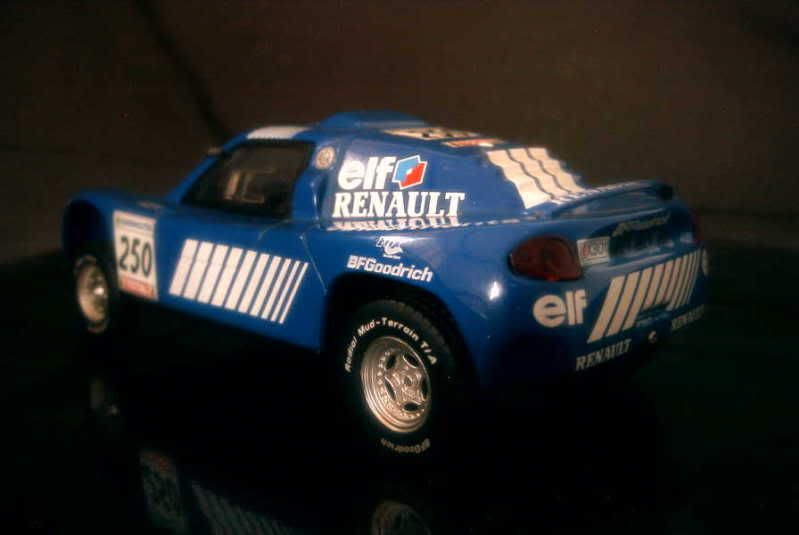
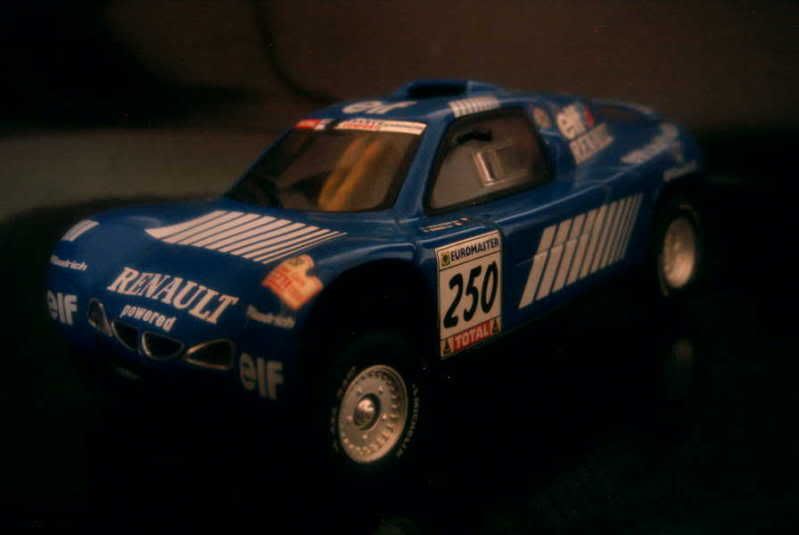
Model: Schlesser Mégane Buggy
Year: 2000
Event: 2000 Paris-Dakar Rally, driven by Jean-Louis Schlesser, navigator Henri Magne (overall winners)
Maker: Norev
Scale: 1/43
Distributed by: M6 as no.11 of its La Légende du Paris-Dakar press series
Acquired: brand new, in June 2006, in Souillac, France
When M6 started its own “Dakar” collection, imitating De Agostini which had already done the same on the Italian market, several of the models provided by Norev were similar to the ones already sold by Altaya (we’ll see some others in later posts). Though roughly identical, they enjoy a few improvements here and there, justifying a slightly higher 13/20.
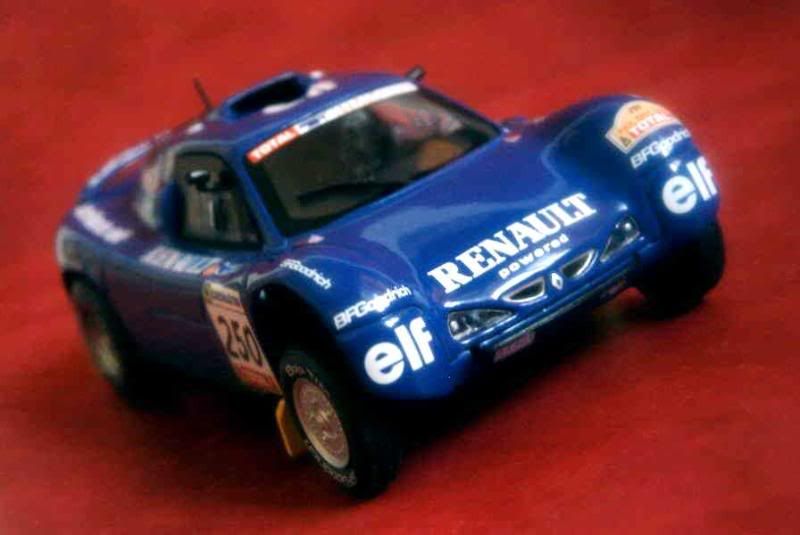
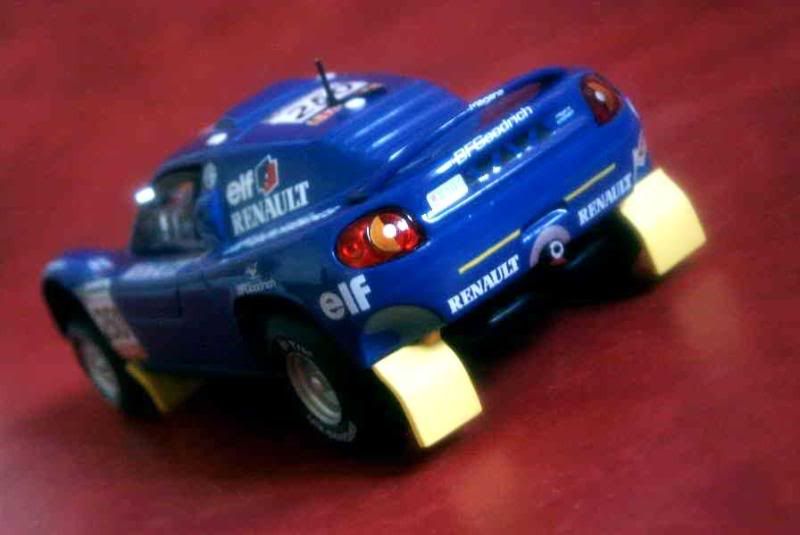
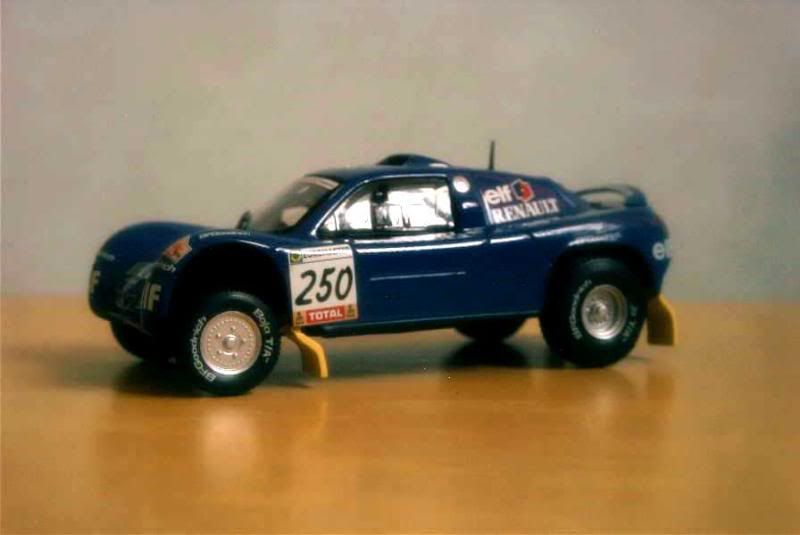
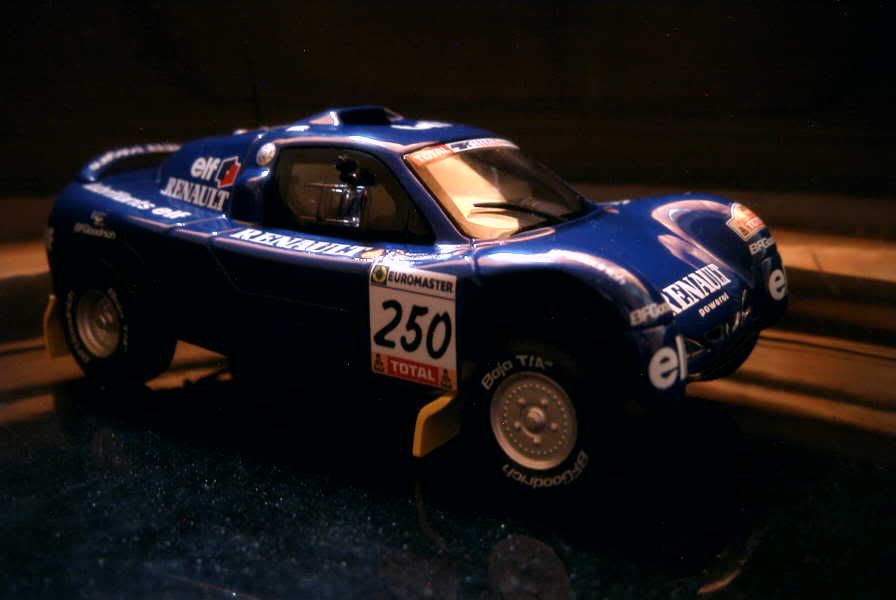
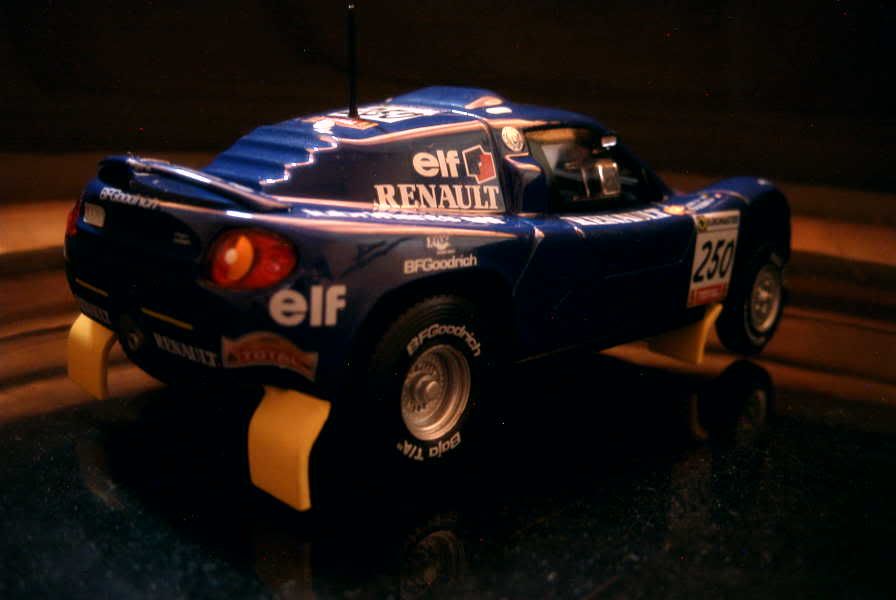
Model: Schlesser Mégane Buggy
Year: 2000
Event: 2000 Paris-Dakar Rally, driven by Jean-Louis Schlesser, navigator Henri Magne (overall winners)
Maker: Bburago
Scale: 1/26
Distributed by: Bburago
Acquired: second hand with neither stand nor box, in December 2011, in Brive, France
A simple but sympathetic model of this car at a larger scale. My rating is 11/20.
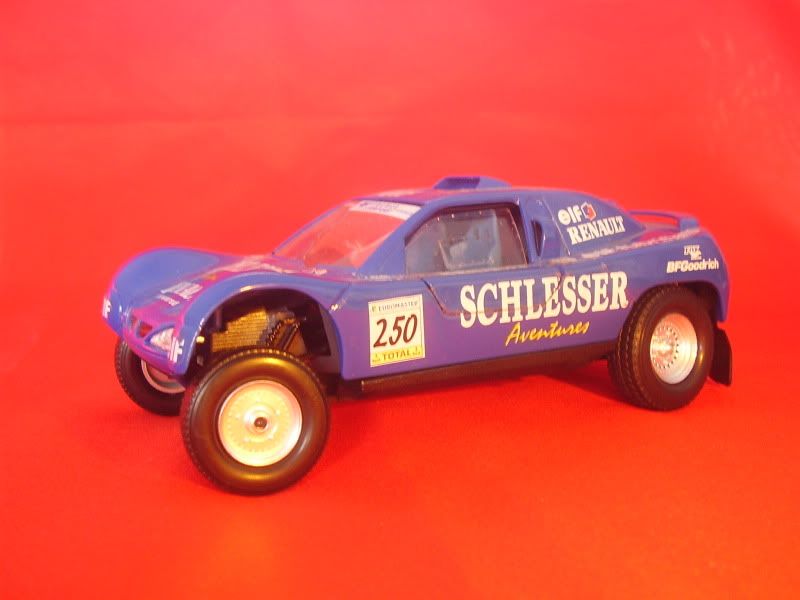
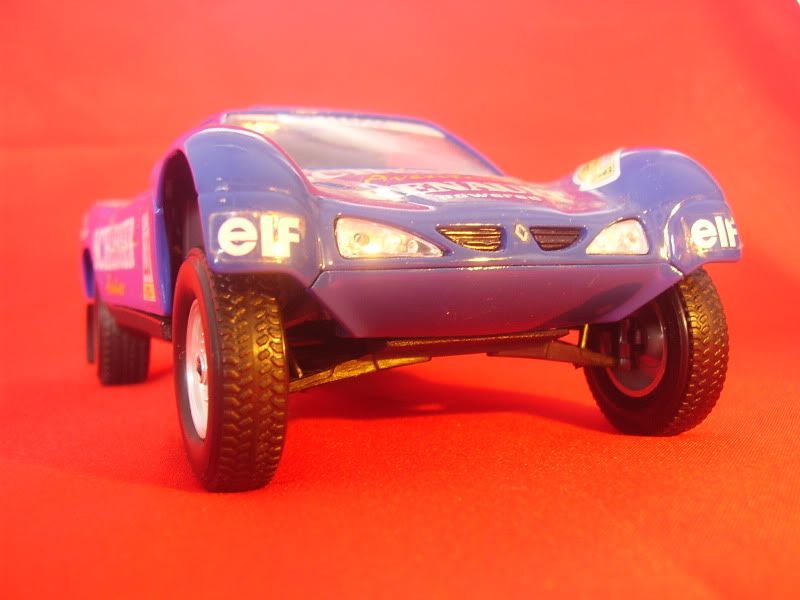
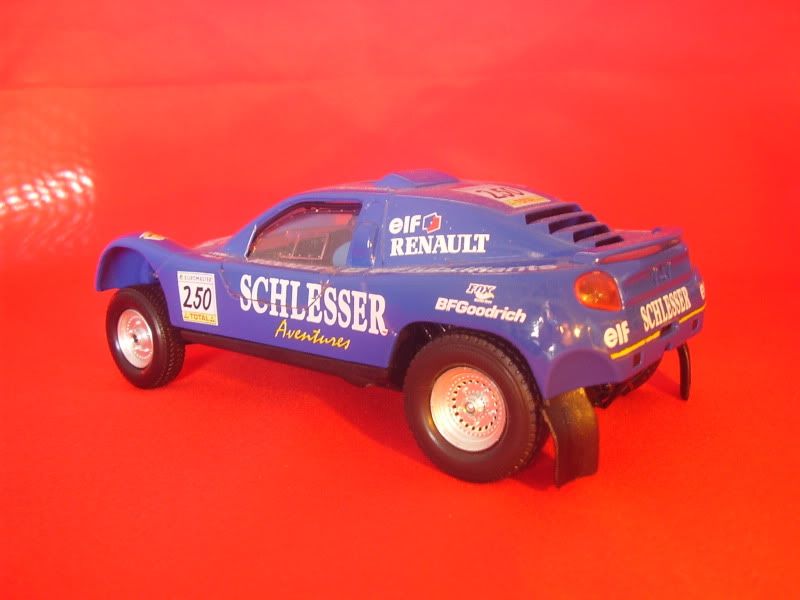

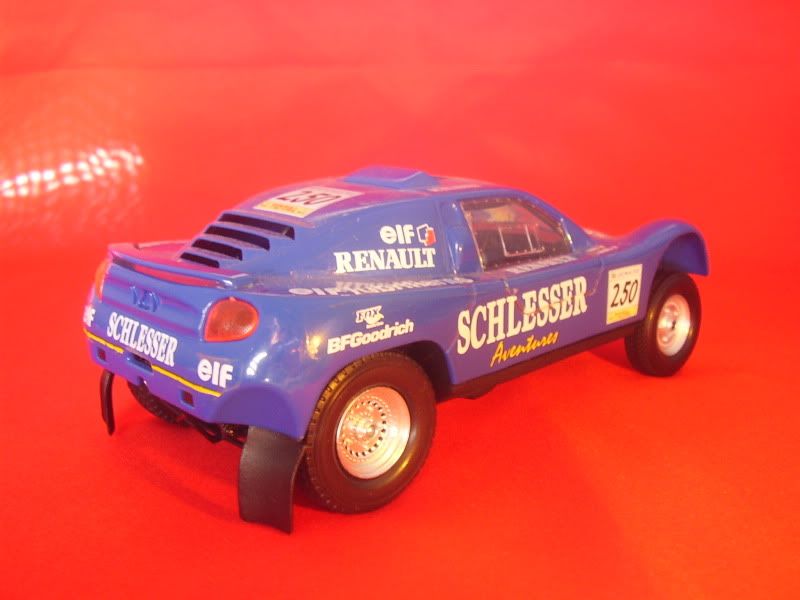
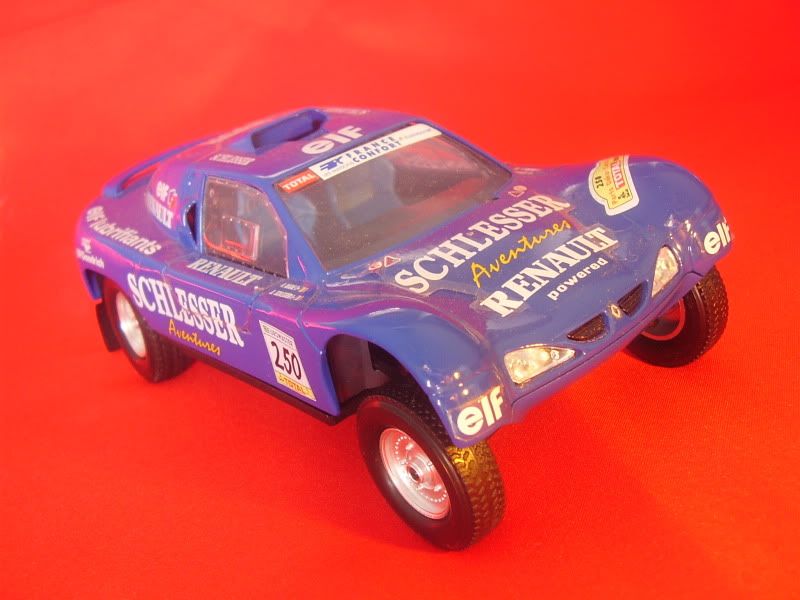

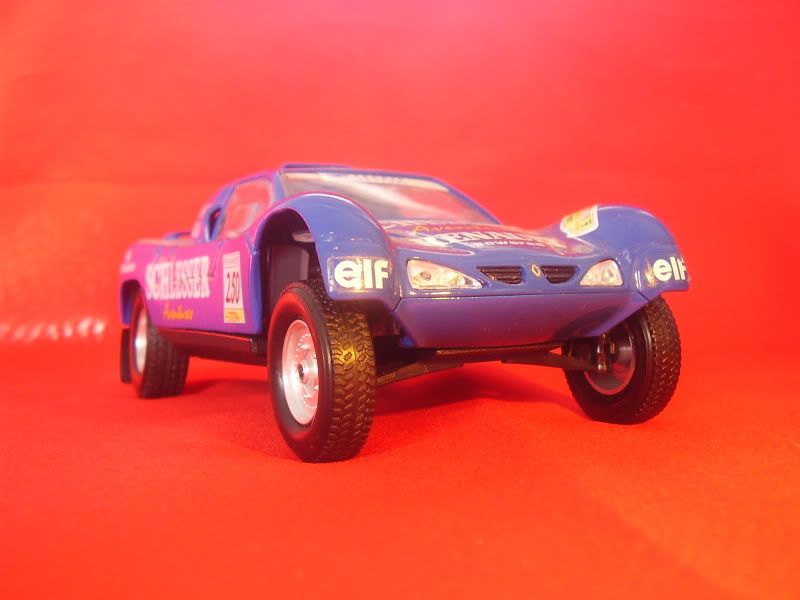
A nephew of the unfortunate Jo Schlesser, who was killed during his very first Formula One Grand Prix, Jean-Louis Schlesser made himself known first on racing tracks. As his uncle, he even appeared in Formula One at a rather ripe old age, making himself famous during the only race he actually started (the 1988 Italian Grand Prix) for a mishap with race leader Ayrton Senna. Schlesser was much more successful in endurance racing, where he clinched two world championships in 1989 end 1990.
Nonetheless Schlesser had already had an attempt in the Paris-Dakar race by then. From 1989 he became a regular competitor and, after giving up his race tracks activities, decided to compete with his very own machine starting in 1992.
Schlesser didn’t make things easy for himself, choosing to build a buggy. This type of cars had often been entered in the Dakar in the past, but all attempts had ended in complete failure. The pilot-constructor’s original approach was to design a vehicle which light weight would allow being competitive with no more than a two-wheel-drive transmission. Furthermore, Schlesser would be alone on board, assuming the functions of both the pilot and navigator (he would later revert to a more traditional division of tasks). Though he was able to record some early wins in a few rally-raids, his regular entries in the extremely difficult Paris-Dakar were, for several years, said to be courageous but doomed to failure.
His first major success came in 1998, when his regularity brought him a world title in rally-raid racing – he would retain the crown until 2002. A victory in the Dakar finally stopped eluding him in 1999. The bold approach of the stubborn Schlesser had finally paid off and, even better, the Frenchman would renew his victory in 2000.
Today, Jean-Louis Schlesser’s little team is still active in rally-raids, though its heydays seem over. Actually, after being powered by Porsche (1992-94) and Seat (1995-96), the buggy’s brighter days date back to the cooperation with Renault (1997-2002), which PRV V6 was both powerful and reliable. After a switch to Ford engines in 2003, results significantly dropped and, furthermore, an apparent partiality of the FIA towards large, money-laden factory teams at the expense of the smaller outfits played against Schlesser.
About the models
We could have so many more models if the little game between die-cast manufacturers wasn’t to copy each others!
Model: Schlesser Mégane Buggy
Year: 2000
Event: 2000 Paris-Dakar Rally, driven by Jean-Louis Schlesser, navigator Henri Magne (overall winners)
Maker: Ixo
Scale: 1/43
Distributed by: Altaya as no.31 of its 100 Ans de Sport Automobile press series
Acquired: second hand with stand but without box, in December 2008, in Brive, France
Altaya distributed this Ixo-made model a few years ago through one of its early series. Competition was scarce back then and standards of quality were therefore low, so this die-cast could seem a little crude by today’s standards. My rating is 11/20.



Model: Schlesser Mégane Buggy
Year: 2000
Event: 2000 Paris-Dakar Rally, driven by Jean-Louis Schlesser, navigator Henri Magne (overall winners)
Maker: Norev
Scale: 1/43
Distributed by: M6 as no.11 of its La Légende du Paris-Dakar press series
Acquired: brand new, in June 2006, in Souillac, France
When M6 started its own “Dakar” collection, imitating De Agostini which had already done the same on the Italian market, several of the models provided by Norev were similar to the ones already sold by Altaya (we’ll see some others in later posts). Though roughly identical, they enjoy a few improvements here and there, justifying a slightly higher 13/20.





Model: Schlesser Mégane Buggy
Year: 2000
Event: 2000 Paris-Dakar Rally, driven by Jean-Louis Schlesser, navigator Henri Magne (overall winners)
Maker: Bburago
Scale: 1/26
Distributed by: Bburago
Acquired: second hand with neither stand nor box, in December 2011, in Brive, France
A simple but sympathetic model of this car at a larger scale. My rating is 11/20.











4 comments:
These cars are very originals. They are different to others cars.
They are indeed.
Hello Lorenzo!
Thanks for your visit to my blog.
You've got an excelent blog with very nice models. Congratulations!
I'll put your blog in my list.
See you very soon, i'll be back! eheheh!
José
"José António, I think this is the beginning of a beautiful friendship."
You have a very nice blog yourself! Thanks for visiting mine, and feel free to return anytime you want, you're very much welcome here!
Post a Comment